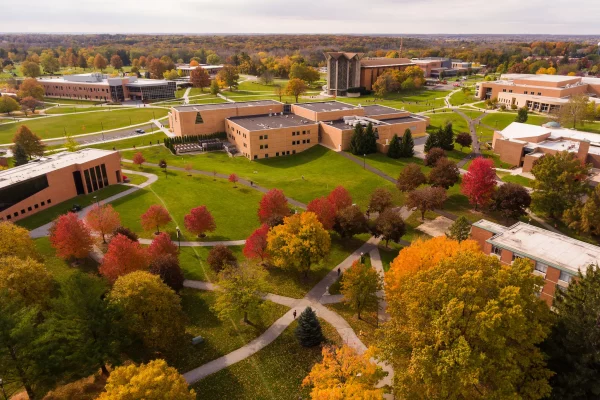Capstone in the Community
 Students in the College of Engineering put their education in action during their final year at Valpo. The senior design course connects engineering students from each of the major disciplines and utilizes the knowledge and skills they acquired in the classroom to benefit campus or the community.
Students in the College of Engineering put their education in action during their final year at Valpo. The senior design course connects engineering students from each of the major disciplines and utilizes the knowledge and skills they acquired in the classroom to benefit campus or the community.
This year, two groups of students completed their capstone experience at Opportunity Enterprises, a nonprofit organization in Northwest Indiana that strives to help individuals with developmental disabilities reach their fullest potential.
“Any time we can get an external sponsor, it’s beneficial,” says Jeff Will, Ph.D., professor of electrical and computer engineering. “Our students are able to address real, pressing needs in their communities while preparing for their careers as engineers.”
The two senior design projects at Opportunity Enterprises were devised to increase worker productivity and reduce the ergonomic stress on the workers’ hands.
One group set up a mechanism that compresses a guardrail bracket that workers previously had to compress by hand while simultaneously screwing elements of the bracket together. The designed mechanism removes the need for the worker to manually compress the components, thus alleviating repetitive pressures on their joints. The mechanism doubled as a productivity tracker as it automatically counted the number of units completed and how production would change over time.
Spencer Locke ’21, a mechanical engineering major with a minor in military leadership, was a member of the guardrail project team.
“Through in-person and video analysis of the current assembly process, our team pinpointed the most taxing steps for the workers and developed a machine to streamline the process,” Spencer says. “To design the mechanism, we utilized a popular computer modeling software, SolidWorks. Then, we were able to fully compile the machine by manufacturing the SolidWorks computer model in the Gellersen manufacturing laboratory.”
The second group designed a rubber band stretcher that would help workers bind tracheotomy twill. Currently workers have to cut lengths of twill, wind them, and then bind them with a band smaller than a quarter. By eliminating the manual stretching of the rubber band, the time to assemble each length of twill was reduced and the task could be completed by workers with limited fine motor skills.
“The work students are doing is actually beneficial, will be deployed, and will make a difference in the lives of many individuals,” Professor Will says. “The senior design course teaches students a system process, but it also allows them to work collaboratively across engineering disciplines.”
Professor Will noted how refreshing it was to see students motivated to go beyond the course requirements to help their community.
“The dedication and enthusiasm that these students have shown for this project is emblematic of our fantastic engineering students, and I cannot be more proud to have these students represent Valparaiso University.”
